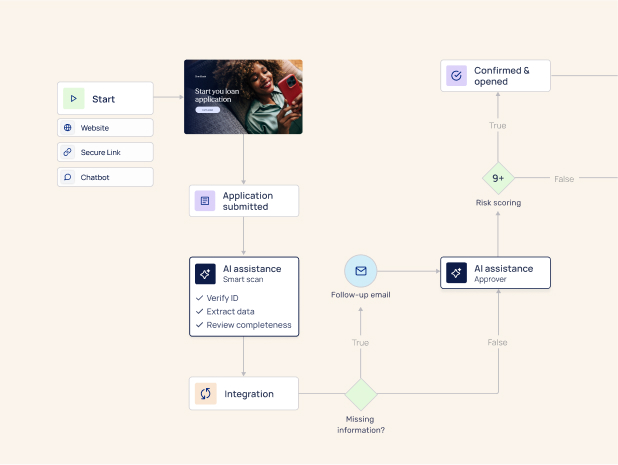In the process of moving to a digital-based economy, several influential European banks have been shutting down branches, including HSBC, Deutsche Bank, Lloyds Bank, DNB, Banco Santander, and the Royal Bank of Scotland. A similar picture can be seen in insurance with Geico, Travelers, and other large insurers investing heavily into digital solutions.
But closing the digital gap is harder than it looks. Research shows that while 81% of service providers feel they have an accurate grasp of their users' needs, only 37 of customers agree with that assessment.
Why banks, insurers, and financial service enterprises must improve UX
Build trust
For the BFSI sector, maintaining customer trust is critical. As digital natives have grown up browsing online reviews and rating apps, they expect similar transparency in financial services. Good user experience design is the key to gaining their trust.
Another reason why good UX is of paramount importance because good UX design leads to a positive customer experience, boosting profitability.
Gain a competitive edge
Good digital UX can be leveraged as an effective marketing tool for BFSI sector companies. According to a report by Forrester Research, companies who invest in UX can expect to see an ROI of $100 for every $1 invested.
For example, financial service providers could use a good user experience to differentiate themselves from competitors and build customer loyalty, leading to increased revenue in the future.
Reduce churn
According to Accenture, attrition rates in the banking sector are about 11%, and new customer churn rates during the first year are around 20-25%. Given that acquiring a new client costs more than $300, the cost of identifying prospects early and intervening may save money.
According to recent research, businesses in the financial sector with high usability scores see on sizable churn reduction compared to other financial service businesses with poor usability scores.
Boost loyalty and build trust
UX affects customer satisfaction and brand loyalty, which directly influence the growth of a business. In banking, in particular, a good user experience is important to improve customer engagement and build trust.
Lower costs
- Operational costs: good UX design leads to a good customer experience, reducing the need for support queries. It also reduces operational costs by reducing errors and rework caused by poor usability or UI issues.
- Acquisition costs: good UX design also helps to reduce acquisition costs because a good user experience will encourage new customers to try your products and services.
More good UX tips for the BFSI industry
Good user experience is about more than just meeting customer expectations or using a pretty font color. It's about anticipating what customers will need at each stage of their journey with you, so plan accordingly based on your audience demographics and market research.

What makes good digital UX?
For digital designers to create good UX, they must think holistically about the user's experience, including good copywriting and good information architecture. UX designs must be intuitive enough for users to easily find desired options while also appealing visually by having a well-organized layout and functional elements.
Creating good UX design and usability can be challenging, but we'll help you by providing some tips:
Look at the whole picture
Most apps are built around product features, but users don't care about products; they care about their lives.
It's important to keep in mind that when designing products and services, there are always multiple stakeholders (users, customers, brands) involved from different backgrounds with varying goals - so prioritizing their needs while balancing business goals is crucial to good UX design.
Focus on usability throughout the customer journey
Good UX needs a strong focus on overall usability. Whether you're designing a website or an app, good usability is the most important factor. Often, digital transformation is haphazard, leaving pockets of inefficient, manual processes. For example, while banks and insurance companies often have great customer portals, forms and data collection often have much to be desired.
Data collection is frequently handled via PDFs, clunky webforms, and manual processes. This not only makes good UX impossible but increases operational costs and customer frustration. Every single step in the customer journey, including data collection, must be good usability & good UX.
Review existing processes and guidelines
Any process or project that has been designed without considering good user experience will require significant changes to make it practical for customers - which is why launching new digital products should be done carefully, not hastily. Businesses must always keep in mind the relevant industry standards (such as ISO 27001) along with any local laws and regulations related to data security, privacy, etc. Finally, ensure all design work adheres to brand identity guidelines before executing them unless there's an exception due to good reason.
Think cross-platform experience
No matter how good your UX is, if the app or website you've designed doesn't work properly across different browsers and devices, then chances are high that people will abandon it. A cross-browser compatibility approach ensures good digital UX by ensuring the maximum reach of a product/ service. This also helps reduce cost and development time as there's no need to create separate designs for each device and platform.
The good user experience should be consistent across desktop, web, etc., as well as mobile platforms. While this isn't easy to achieve since screens are getting smaller on phones/tabs/watches, it's becoming more critical than ever before due to the rise in mobile traffic.
Be clear and concise.
Include all necessary information in your design with a good hierarchy and use of white space. Make sure that users can find what they need quickly without any confusion.
Design is not just about colors and images. Good design also means good copy. Ensure that your words are clear, concise, and easy to understand with good context.
Good design is good communication: good BFSI UX design should communicate the right message to users in a way that's easy for them to understand. Talk in the language your customers can understand, avoid industry jargon and too many technical terms. Put yourself in your customer's shoes and think about whether they would easily get what you're saying or not.
Create end-to-end, holistic experiences
Create a good user experience that users will remember and enjoy – from start to finish. Most importantly, create good UX for the BFSI industry by focusing on the overall usability of your product or website - whether it's a digital platform or an app.
Test your design and optimize
Good user experience requires continuous testing, iteration, and optimization. Make sure to have a solid analytics strategy in place so you can monitor how your design is performing against set benchmarks. Always keep tweaking things until good results have been achieved.

Design digital journeys, not one-off experiences
Good BFSI UX design should be good across the entire customer journey. Make sure to test your app or website in different stages of user onboarding and conversion, as well as throughout their lifecycle.
Keep it simple!
To offer a positive user experience, digital products must be simple to use and navigate. Digital products are meant to make life easier - not harder with good reason. So making them intuitive with ease of use (which comes as part of good usability) helps users understand what they need quickly without any confusion or frustration.
Financial services products, on the other hand, are often complicated by nature. There's a lot of complicated data to clarify, a lot of documentation to acquire, and a lot of compliance and rules to consider, making it more difficult than in other industries such as retail or travel.
No matter how complex a product or service is, financial apps and websites must have an intuitive interface so customers can quickly move forward in their journey without getting confused over what they need to do next.
Don't overcomplicate matters with unnecessary features that increase complexity instead of reducing it – unless there's really an important business case behind doing so which outweighs good UX.
The navigation of the product should also be streamlined for their convenience: putting key features front and center where users expect them makes finding information easier while reducing drop-off rates at different steps along the conversion funnel.
UX matters. What now?
The bottom line: Good user experience leads to better conversion rates & revenue growth - so make sure every aspect of the customer journey with your brand reflects good design principles such as simplicity, consistency, and clear communication.
Achieving good digital UX isn't easy, but by focusing on underlying principles of great product design, you can achieve your business goals while ensuring customer satisfaction at the same time.
EasySend makes it simple for insurers, banks and financial institutions to build digital customer journeys quickly and efficiently without writing a single line of code. Take advantage of UX/UI design expertise and tools for good digital user experience in the BFSI industry.
To read more insights on good digital UX, visit our website at EasySend.io or get in touch with us today!





